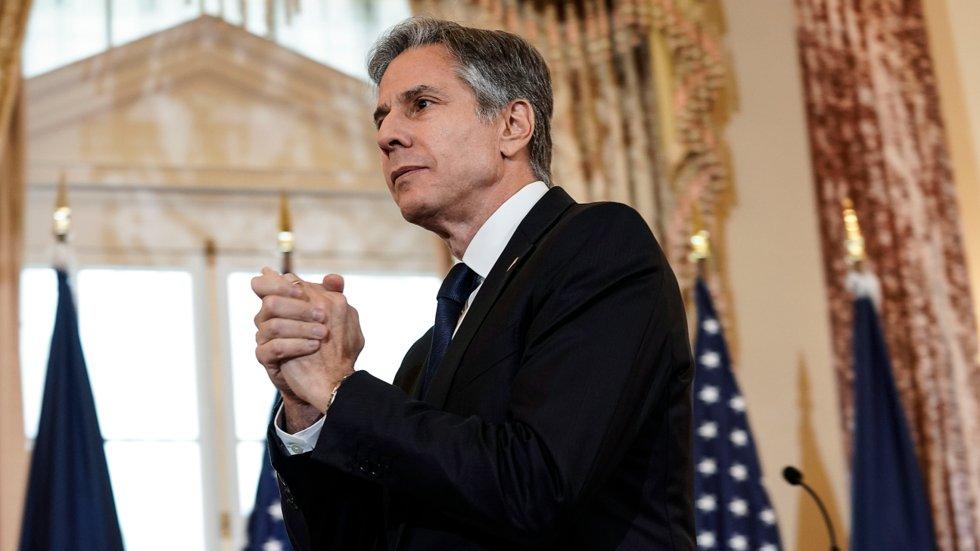– In Canada, they have broken the heat record by almost five degrees. They have never experienced anything like it. When heat records are set, it is more common with an increase of about 0.1 degree, says Sand, who is a senior researcher at the Cicero Center for Climate Research.
After two days of heat records, 49.5 degrees was measured on Tuesday in the Canadian village of Lytton. The previous heat record in Canada was 45 degrees and was set in 1937.
In Lytton, which is 260 km northeast of Vancouver in western Canada, residents have now been evacuated after several large fires broke out around the village on Wednesday.
– It’s awful. The whole village is on fire, said mayor Jan Polderman in Lytton to the state channel CBC.
Strong winds caused the fire to spread very quickly, and the inhabitants of the village only managed to take a few belongings with them before they had to throw themselves into the cars and leave the inferno.
Heat waves come as a result of high pressure that pushes dry, hot air down. When it has also been very dry, you can get extreme temperatures, climate researcher Sand explains.
– Climate change means that we get ever higher temperatures during the heat waves. They get longer, more intense and come more often. Here in Norway, we associate heat waves with something good, and many of us want heat waves in the summer, but in warmer countries, heat waves have serious consequences.
Heat waves that take life
In Canada, the heat wave has taken many lives. Far more deaths are reported than usual. Chief pathologist Lisa Lapointe in the Canadian province of British Columbia, said on Wednesday that 486 unexpected deaths had been reported from Friday to Wednesday. Normally, about 165 people will die in a five-day period in this province. In the city of Vancouver, the heat wave has been a contributing cause of 65 deaths since Friday.
It is not only Canada that is experiencing extreme temperatures. In Pakistan, it was recently measured over 50 degrees in the city of Jacobabad.
– We know that the extreme heat waves will be even more extreme, we see that all over the world. 50 degrees is halfway to boiling. It’s pretty sick. When it gets so hot, people are hit more often by strokes and heart attacks, and many vulnerable and elderly people die. The infrastructure can also break down. We have not built societies that can withstand such temperatures. As with climate change in general, heat waves in particular affect the poorest part of the population, those who, for example, cannot afford air conditioning.
She emphasizes that heat waves are not a new phenomenon.
– But it did not get so hot before. Now the entire climate system is being pushed towards ever higher temperatures. Therefore, we are constantly experiencing new heat records, and temperatures that were previously unusual, have now become more common.
Sand believes it is urgent to reduce greenhouse gas emissions and hopes the heat waves will be a wake-up call.
– We must keep in mind that CO₂ can stay in the atmosphere for hundreds of years. The climate change we are seeing now is a result of what we released in the 60s and 70s as well. We may have reached the peak of global emissions now, and that’s fine, but they have to go down a lot. The question is whether they happen fast enough.
[ Meteorolog: – Nå kommer hetebølgen ]
Exceptional temperature jump
Tore Furevik, climate researcher and director at the Bjerknes Center for Climate Research, also believes that there is every reason to be concerned when extreme heat records are set.
– What we now see clearly shows that climate change is no joke. Prolonged heat waves with extreme temperatures that we now see in the western parts of the United States and Canada are not only unpleasant, they are directly deadly. We saw it in Europe in 2003 and in Russia in 2010, both times between 60,000 and 70,000 people died.
He is not surprised that new heat records are being set.
– Climate change means that it is gradually warmer, and random effects due to weather and wind, will make heat records come more often and cold records less often. But a temperature jump of almost 5 degrees, from 45 to almost 50 degrees, is still quite exceptional. I do not think anyone could have imagined that it could happen.
[ Etterlyser utvidet plastforbud: – Det står bare på politisk vilje ]
– Large areas of land will have to be vacated
According to Furevik, the climate models clearly show that climate change will lead to large areas that are currently drier, becoming even drier and that the heat waves will come more often and become stronger.
– This will have a major impact on access to water, on food production and on people’s health, and we must be prepared for large areas of land to be vacated, he says.
– Are you becoming more and more concerned about climate change with each passing year?
– Both yes and no. We see many things that indicate that climate change may be worse than we previously thought. This applies, among other things, to the combination of drought and heating, which we see has led to extreme effects. And we all remember last year’s fires in Australia and the United States, which were the result of the same thing. It is now becoming extremely important that the world is able to quickly reduce greenhouse gas emissions, so that we are able to limit climate change. Among other things, the UN’s climate panel has seen that a difference of only half a degree, from one and a half to two degrees, means that almost half a billion more people will be regularly exposed to extreme heat waves, he says and adds:
– Fortunately, we see that the UK, EU, USA, China and a number of other large economies, have set ambitious goals to reduce emissions by around 50 percent by 2030 and goals of net zero by 2050 or 2060. And with falling prices for renewables energy and a financial industry that is rapidly moving money from coal, oil and gas to renewable energy and renewable transport solutions, there is reason to be cautiously optimistic.
– .


